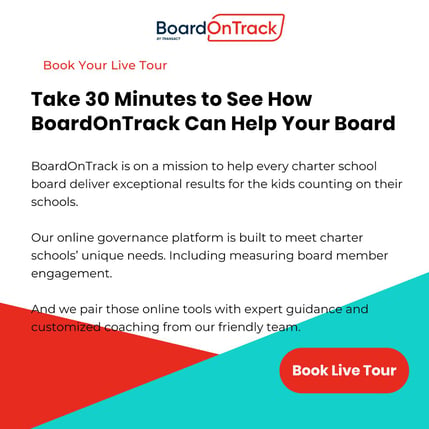Board member engagement is high on a lot of people’s minds right now.
Charter school governance certainly has become exponentially more complex amid the pandemic. And, for many, even fully contributing to board work while also managing challenges at work and at home has become much more difficult.
In fact, our Charter School Governance index found this to be a high priority in pre-pandemic times, too.
What’s more, charter school CEOs were considerably more likely than their board members and even board chairs to name board engagement among their top three governance priorities.
Most charter school boards mention “nonperforming” board members as one of their top board-related problems.
We often see boards in which a few board members seem to carry an outsized share of the work. They’re the ones who consistently attend every meeting, arrive prepared for each agenda item, and can be relied on to both volunteer for and complete vital tasks.
Other trustees might rarely attend meetings. When they do, they’re apt to rehash the discussions that have occurred in their absence. They rarely or possibly never volunteer for tasks. And if they do volunteer, they don’t complete their tasks.
These nonperforming board members can quickly bring down the morale of the committed group. And those few board members who carry an outsized share are sure to burn out. Where will this leave these boards in a year or two?
Engagement starts with new board member orientation.
Board orientation is essential. Once the Governance Committee has successfully recruited new board members, it’s important that they put time into providing them an in-depth orientation that sets them on the path to engagement from the beginning.
A new trustee won’t automatically grasp the complexity of your organization. You have to guide them through the school’s history, the current challenges, and the future direction of the organization.
Typically, the Governance Committee organizes the board orientation with assistance from the Board Chair and CEO. You may find it useful to add several trustees at one time so that you can onboard them together, minimizing the repetition of getting new members up to speed.
Once your orientation is complete, how do you keep your trustees attentive and involved?
Keep board members engaged
Retaining trustees might be one of the most common questions we hear. This is a very real pain point for many boards. The good news is, there are proven things you can do to retain your trustees.
1. Tighten up your board meetings.
To keep strong trustees on your board, the single most important thing is to tighten up your board meetings.
Board meetings that continually engage strong board members typically last no longer than two hours, keep to the established agenda, and focus on strategic, future-facing issues — not minutiae.
Consider evaluating your board meetings regularly. Another finding of the 2019-20 Governance Index was that far more board members and CEOs called for better board meetings than did the Board Chairs who run those meetings. Board Chairs especially should take note of this potential blind spot that could be a drain on engagement, or even cost you stellar board members.
To get a pulse check on your meetings, use our questions. Either hand out a quick checklist or simply go around and ask each board member to share their observations.
- What did we do tonight to further our mission?
- How much of our time was spent reporting on the past vs. planning our future? Did we stick to the agenda?
- Was there equal participation by board members?
- Was this meeting effective? Why or why not?
- What could be done to improve the board meeting?
2. Ensure each board member has a clear path to contributing what they have to offer.
Make sure that each board member is engaged in meaningful work on behalf of the organization. Each board member should actively serve on a committee or contribute to another tangible project.
Here are the five core committees every charter school board should have.
3. Connect each board member with the life of your charter school.
Provide opportunities for board members to participate in your charter school’s activities. Connecting directly with the mission is key to staying engaged and passionate.
4. Make board member evaluations a priority.
Conduct board member evaluations to gauge board member satisfaction. Keeping them involved and holding them accountable through a systematic evaluation is a key driver in trustee retention.
5. Get out of the board meeting room, together.
Conduct annual board retreats and plan special outings so individuals develop rapport and feel comfortable challenging one another. This is key to a high-functioning governance team. A little fun can go a long way.
6. Develop an annual board development program.
Task your Governance Committee with developing a simple annual board-building program.
Learn together outside of your board meetings, then use time during a board meeting to discuss the knowledge you gained and the actions you might take to get results this year.
This could mean engaging in a live or on-demand board training session together, reading a carefully-selected article or two, or hosting a low-pressure board member book club.
For example: we haven’t met a board yet that didn’t think they needed to do more fundraising. Pick a book. Buy each board member a copy. Consider including your CEO and senior staff, too. Have a 20-minute, low-pressure book club discussion at a board meeting.
Some of our favorites are Big Gifts for Small Groups: A Board Member’s 1-Hour Guide to Securing Gifts of $500 to $5,000, by Andy Robinson and Asking: A 59-Minute Guide to Everything Board Members, Volunteers, and Staff Must Know to Secure the Gift, by Jerold Panas.
7. Envision the future together.
Ask board members to think about what your organization will be like in twenty years.
Write down what your organization looks like. What’s happening? Who’s there? How many kids? How many schools? How has the program evolved? What does your board look like? How are they working with the CEO and senior staff?
Then share your thoughts. Discuss how to create a bridge from where you are now to where you want to be. What is the role of the board in getting there?
Most boards want to boost board member engagement.
Recruiting the right people is only the first step in achieving your goals. With proven practices, you can keep those people engaged and focused on moving the organization forward.
Additional recommended resources:
Download our guide to boosting board member engagement to get even more proven practices to boost board member engagement, and even build accountability into your board.



